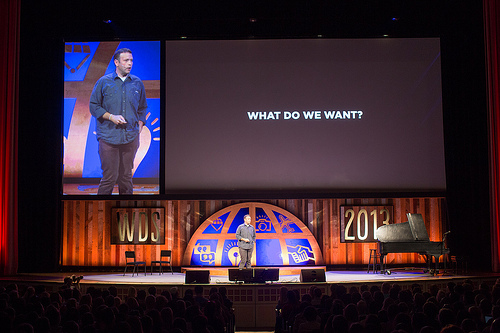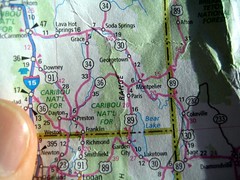Online Customer Service: a Personal Experience
Okay, it’s only happened a couple of times to me, but they were both significant, so they’re worth recounting.
When I moved last year, Comcast said the best way to transfer service to my new house was to just take all the equipment to the new location and give ‘em a call when the hook-up was complete and they’d just turn the switch and voila! we’d have service!
Well, generally speaking, that happened, except for one thing. I have online voice mail access, and no matter what I was doing, or who or how often I was calling, or who was at the other end of the line, they couldn’t make my voice mail appear online. It worked fine on the phone, but I was used to checking it online. For whatever reason, Comcast insists on creating a whole new account when you move and transferring everything over, which was one of the main reasons the voice mail wouldn’t transfer seamlessly.
After several calls in 8 weeks and several promises that it would happen, in my frustration I tweeted:
@comcastcares Been 8 weeks since I moved and Comcast is still unable to figure out how to restore access to online voice mail. #epicfail
— Tim Patterson (@tradeshowguy) October 30, 2012
@Comcastwill responded right away and connected me with a tech who solved the problem within 24 hours:
@ComcastWill thanks for looking. Since moving late August VM has been up briefly 2-3 times, but always vanishes.
— Tim Patterson (@tradeshowguy) October 30, 2012
@comcastcares Thx to Erica in Denver, my online voice mail is now working!
— Tim Patterson (@tradeshowguy) October 31, 2012
In another instance, my company was having an ongoing discussion over disagreements in a contract with Cision after we had leased Radian6 to use for social media research for a client. It seemed no matter how we responded or whom we responded to, it was as if no one was listening. The emails, phone calls and letters we sent were ignored. When we did get a communication from Cision, it was always a new person with no knowledge of any previous communication, and the conversation had to start all over from the beginning. We even sent the CEO a registered letter hoping to at least get someone’s attention, but to no avail.
Finally I posted this on Twitter:
@cision How do we get a reply from the Cision CEO? He failed to respond to a registered, certified letter this summer over a contract issue.
— Tim Patterson (@tradeshowguy) November 19, 2012
Within a couple of days (it wasn’t immediate), I heard back from someone at Cision asking for a phone number so they could contact me. I gave it to them, and was contacted by someone that was actually interested in helping us resolve the issue. It took a few weeks and some back and forth, but it was resolved to our satisfaction.
It really shouldn’t surprise me, but customer service is very active on Twitter. Is it because companies are dedicating resources to tracking online conversations, or manning the Twitter accounts? Are they afraid of having a negative experience go viral, which has happened too many times to count? Is it just smart business? Or is it something else?
Whatever the impetus, I like that there is often a quick way to get someone’s attention and get issues resolved.













